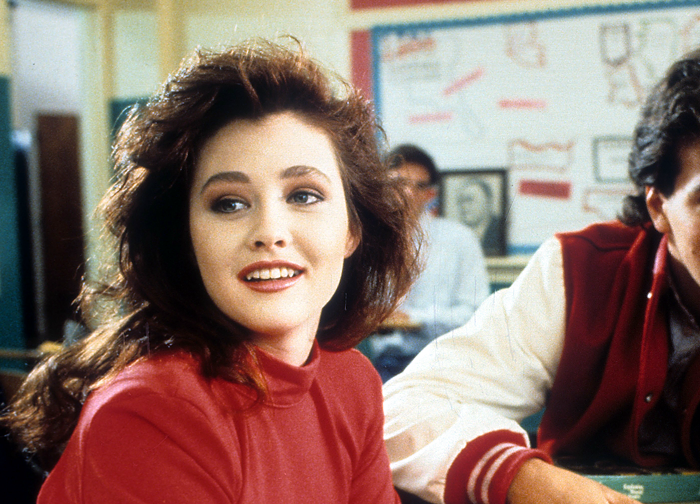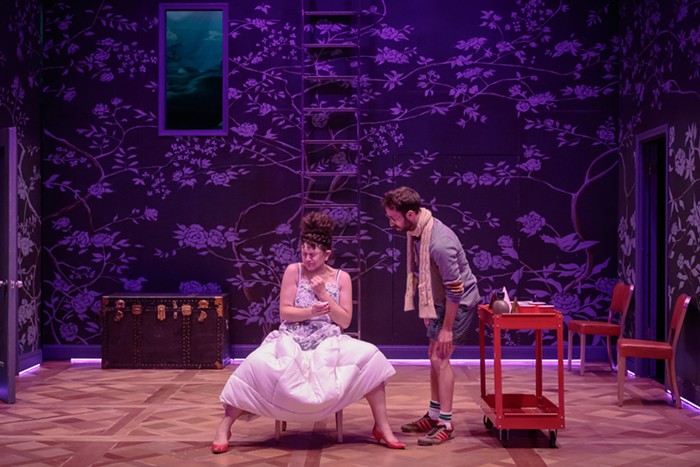Born in 1925, Robert Colescott was among a generation of American artists who abandoned figuration in favor of abstract expression. But Colescott, who studied under Fernand Leger in Paris, never adopted the approach of his contemporaries. Instead, he developed his own deeply expressive style, while continuing to paint people, scenes, and discernible stories. Unlike contemplative color fields or sterile geometric arrangements, Colescott's work isn't so theory based. On the other hand, his subject matter is communicated with frank directness. Colescott even puts his message into words, literally incorporating phrases and words into the compositions. In "Haircut," one of the large-scale paintings in his show at the Laura Russo Gallery, he scrawls the words "slave," "worker," "boss," and "capitalist" on the steps of a staircase. It may charge the painting with a venomous sociopolitical critique, but such a lack of subtlety spoils it as art.
This is particularly frustrating in the case of "Haircut," which hardly requires this kind of explanation. The painting focuses on a young black man, dressed in a shirt and tie, receiving a haircut. Around him, a vortex of imagery swirls and overlaps like a page from a comic book in which the frames are caving in. A pistol is shoved in the face of a terrified black man, an industrial skyline pipe smokes into the night, and a fat white man in a bow tie puffs a cigar. The subject—perhaps cutting his hair for a corporate job interview—is visited by all the implicit compromise of a prosperous professional career.
Elsewhere, Colescott's canvases are dominated by the presence of sexualized but grotesque female nudes. In one instance, the nudes reference classical art, as a lily-white apparition of Venus visits a group of black bathers. But more commonly, an objectifying eye and unsettling tone of violence is at play. In part, Colescott seems to be portraying the female as a site of conquest and desire, scarcely different from the lust for money or power. Signifiers of empire—from Coca Cola logos and Disney characters to pyramids and ancient Roman headdresses—pervade the rest of the exhibition, so it's no stretch to read the female body as similarly emblematic. In all, it's an alarmingly depthless treatment of women.
Colescott is a major artist, but this selection of work, drawn from his output over the past two decades, falls flat. Too many of the paintings seem desperate to bait viewers into a reaction and rely on politics that are, by now, hardly radical. More importantly, they lack the sheer beauty to make up for trying so hard. JOHN MOTLEY












